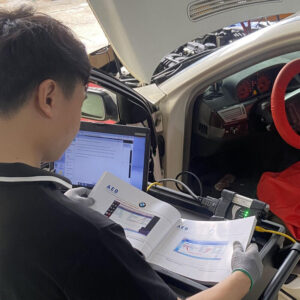
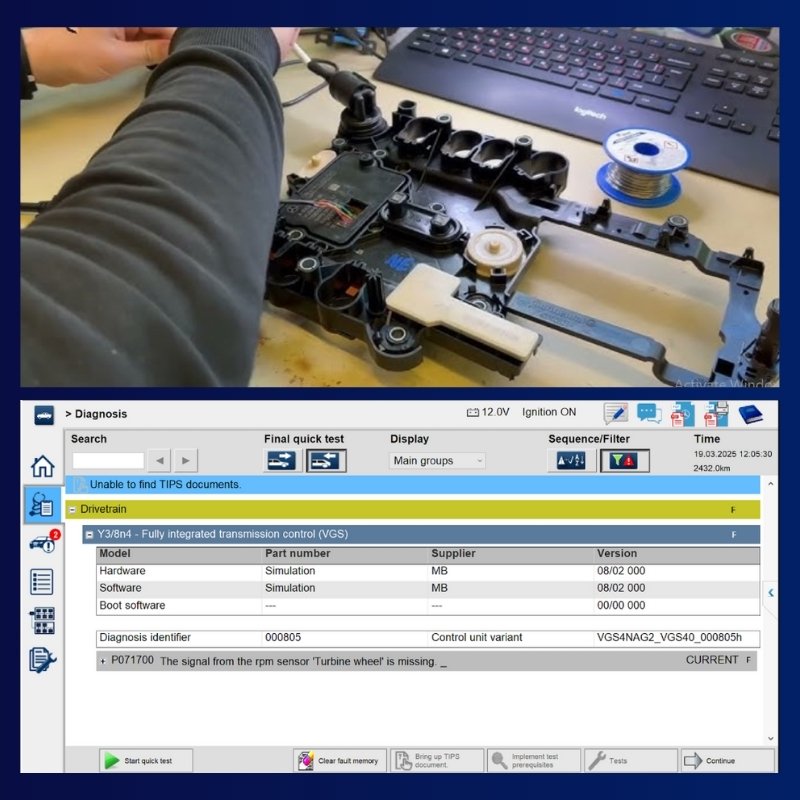
How to Fix P0717 Mercedes Fault Code
Contents
- 1. Decoding the Mercedes-Benz P0717 Fault Code
- 1.1. What Triggers the Dreaded P0717 Code in Mercedes?
- 1.2. Symptoms of a Mercedes with a P0717 Code
- 2. Essential Tools for Accurate Mercedes P0717 Diagnosis
- 3. Step-by-Step Diagnostic Procedure for Mercedes P0717
- 3.1 Preliminary Checks
- 3.1.1 Transmission Fluid:
- 3.1.2 Battery Voltage:
- 3.2 Sensor Circuit Inspection
- 3.2.1 Visual Check:
- 3.2.2 Resistance Test:
- 3.2.3 Signal Test:
- 3.3 Live Data Analysis
- 3.3.1 Input RPM vs. Output RPM Monitoring:
- 3.4 EGS/TCM Check
- 3.4.1 Scan for EGS/TCM Codes:
- 3.4.2 TCM Power and Ground Circuit Testing:
- 3.4.3 TCM Firmware Update:
- 4. Effective Repair Solutions for Mercedes P0717
- 4.1 Input Speed Sensor Replacement
- 4.1.1 Parts:
- 4.1.2 Procedure:
- 4.1.3 Calibration:
- 4.2 Wiring Repair
- 4.3 Valve Body/Solenoid Inspection
- 4.4 TCM/PCM Replacement
- 5. Critical Considerations for Mercedes P0717 Repairs
- 6. The Importance of Preventative Maintenance
- 7. When to Seek Expert Assistance
- Need Expert Support? Contact AutoExplain!
Experiencing a P0717 code in your Mercedes-Benz can be a bit unsettling, but don’t worry, autoexplain.com is here to illuminate the path to a quick and effective resolution. This guide provides you with the expert knowledge needed to understand, diagnose, and address this “Input/Turbine Speed Sensor ‘A’ Circuit No Signal” issue, ensuring your Mercedes is back on the road smoothly. Let’s explore the intricacies of this diagnostic trouble code, empowering you with the information you need for efficient troubleshooting and repair of your vehicle’s transmission system.
1. Decoding the Mercedes-Benz P0717 Fault Code
The diagnostic trouble code P0717 in your Mercedes-Benz specifically points to a problem within the “Input/Turbine Speed Sensor ‘A’ Circuit No Signal.” This sensor plays a vital role in your vehicle’s transmission system. It is responsible for monitoring the rotational speed of the transmission input shaft. This information is absolutely critical for several key functions, including seamless and timely gear shifting, the efficient lockup of the torque converter, and the overall proper operation of the Transmission Control Module (TCM). When the TCM doesn’t receive a signal from this sensor, or the signal is erratic, it triggers the P0717 code, indicating a potential disruption in these essential transmission operations. Understanding this fundamental definition is the first step towards a successful diagnosis and repair.
1.1. What Triggers the Dreaded P0717 Code in Mercedes?
Several factors can lead to the illumination of the P0717 fault code on your Mercedes dashboard. Pinpointing the exact cause is essential for an effective and lasting repair. Here are the most common culprits:
- A Faulty Input/Turbine Speed Sensor: The sensor itself might have failed due to age, wear and tear, internal damage, or exposure to extreme temperatures. This is often the most direct cause of a “no signal” error.
- Wiring Issues: Problems within the wiring harness connecting the sensor to the TCU can disrupt the signal. This includes:
- Damaged or Broken Wires: Physical damage from road debris, accidents, or even rodents can sever the electrical connection.
- Corroded Connectors: Moisture and environmental factors can lead to corrosion on the sensor or TCU connectors, hindering proper electrical flow.
- Loose Connections: Vibrations and time can cause connectors to loosen, resulting in an intermittent or complete loss of signal.
- Transmission Control Unit (TCU) Malfunction: In rarer cases, the issue might lie within the TCU itself. If the input circuitry responsible for processing the sensor signal is faulty, it can lead to a P0717 code even if the sensor and wiring are intact.
- Low Transmission Fluid Level or Contaminated Fluid: While less directly related to the sensor’s electrical signal, extremely low or contaminated transmission fluid can sometimes cause erratic sensor readings or contribute to overall transmission issues that trigger the code.
- Electromagnetic Interference (EMI): Although less frequent, strong electromagnetic interference from nearby electrical components could potentially disrupt the delicate signal from the speed sensor.
Understanding these potential causes empowers you or your mechanic to approach the diagnostic process methodically. Automotive forums dedicated to Mercedes-Benz owners can also provide anecdotal evidence and shared experiences related to P0717 faults.
1.2. Symptoms of a Mercedes with a P0717 Code
When your Mercedes throws a P0717 code, it rarely goes unnoticed. The absence of a proper input speed sensor signal directly impacts the transmission’s ability to function correctly, leading to various noticeable symptoms. Being aware of these signs can help you identify the problem early and seek timely intervention:
- Transmission Won’t Shift Gears Properly: This is one of the most common and prominent symptoms. The transmission might get stuck in a single gear (often limp mode), refuse to shift up or down, or exhibit erratic and unpredictable gear changes.
- Limp Mode Activation: To protect itself from further damage, the transmission control unit might enter “limp mode.” This usually restricts the transmission to a limited gear range, often second or third gear, and significantly reduces engine power and vehicle speed.
- Check Engine Light Illumination: The malfunction indicator lamp (MIL), commonly known as the check engine light, will almost certainly illuminate on your dashboard to alert you to the detected fault.
- Harsh or Jerky Shifting: When the TCU doesn’t have accurate input speed information, it can lead to abrupt and uncomfortable gear changes.
- Loss of Power or Acceleration: The inability to shift gears smoothly and efficiently can result in a noticeable decrease in the vehicle’s power and acceleration capabilities.
- Increased Fuel Consumption: If the transmission is not operating in its optimal gear range, the engine might have to work harder, leading to reduced fuel economy.
- Speedometer Issues (Less Common): In some less frequent scenarios, a faulty input speed sensor might indirectly affect the speedometer reading, although this is more often associated with output speed sensor problems.
Experiencing any combination of these symptoms should prompt you to have your Mercedes diagnosed promptly. Ignoring a P0717 code can potentially lead to further damage to the transmission system.
2. Essential Tools for Accurate Mercedes P0717 Diagnosis
To accurately diagnose and effectively address the Mercedes-Benz P0717 fault code, having the right tools at your disposal is paramount. These tools will enable you to gather crucial information, perform necessary tests, and ultimately pinpoint the root cause of the problem. Investing in or having access to these tools will significantly streamline the diagnostic process and ensure a more efficient repair.
- Mercedes STAR/Xentry Diagnostics
- Multimeter/Oscilloscope
- Transmission Fluid Analysis Kit
3. Step-by-Step Diagnostic Procedure for Mercedes P0717
A systematic approach to diagnosing the Mercedes-Benz P0717 fault code will save you time and ensure you don’t overlook any potential causes. Follow these detailed steps to pinpoint the source of the problem.
3.1 Preliminary Checks
Before diving into sensor-specific tests, it’s crucial to rule out simpler issues that can sometimes trigger a P0717 code.
3.1.1 Transmission Fluid:
-
- Verification: Carefully check the transmission fluid level according to your vehicle’s owner’s manual or the Mercedes-Benz workshop manual. Ensure the vehicle is on a level surface and at the correct operating temperature (if specified for level checking).
- Condition Assessment: Examine the fluid’s color and smell. Healthy transmission fluid is typically reddish and has a slightly sweet odor. Dark, burnt-smelling fluid suggests internal transmission problems that might indirectly affect sensor readings or indicate a need for a fluid change regardless of the P0717 code.
3.1.2 Battery Voltage:
-
- Measurement: Use a multimeter to measure the battery voltage. Ensure it reads above 12.4 volts. Low battery voltage can lead to erratic signals and miscommunication between electronic modules, potentially triggering false fault codes. Charge the battery if the voltage is low and retest.
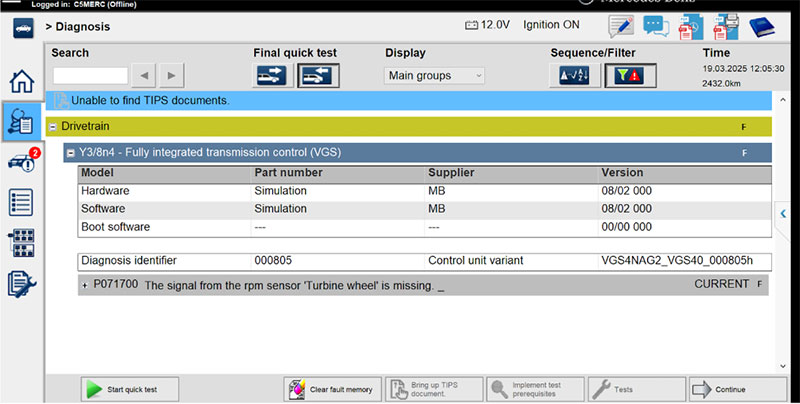
3.2 Sensor Circuit Inspection
The next step involves a thorough examination of the input speed sensor’s circuit, including the wiring and connections.
3.2.1 Visual Check:
-
- Harness Inspection: Carefully inspect the wiring harness leading to the input speed sensor. Look for any signs of physical damage, such as cuts, abrasions, or melting. Pay close attention to areas where the harness might rub against other components or near heat sources. Common areas for wiring damage include near air conditioning vents (where condensation can accumulate) and around transmission mounts (where movement can cause chafing).
- Connector Examination: Inspect the sensor connector and the corresponding connector on the vehicle’s wiring harness. Look for corrosion on the terminals, bent or broken pins, and loose or improperly seated connectors. Ensure the connectors lock securely.
3.2.2 Resistance Test:
-
- Sensor Disconnection: Disconnect the electrical connector from the input speed sensor.
- Resistance Measurement: Using a multimeter set to the ohms (Ω) setting, measure the resistance between the specified terminals of the sensor. Refer to the Mercedes-Benz workshop manual for the exact terminals to test and the factory-specified resistance range (typically 300–600Ω). An open circuit (infinite resistance) or a short circuit (very low or zero resistance) indicates a faulty sensor.
3.2.3 Signal Test:
-
- Oscilloscope Connection: With the engine running, carefully back-probe the signal wire terminal of the input speed sensor connector using an oscilloscope. Back-probing involves inserting a thin probe into the back of the connector without disconnecting it, allowing you to measure the signal while the circuit is live.
- Waveform Analysis: Observe the waveform displayed on the oscilloscope. A healthy input speed sensor should generate an AC voltage square wave. The amplitude of this waveform should typically be between 0.5 and 1.5 volts. The absence of a waveform or a distorted waveform indicates a problem with the sensor’s ability to generate a signal.
3.3 Live Data Analysis
Using the Mercedes STAR/Xentry diagnostic tool to analyze live data provides valuable insights into the sensor’s behavior in real-time.
3.3.1 Input RPM vs. Output RPM Monitoring:
-
- Neutral Test: With the engine running and the transmission in neutral, use STAR/Xentry to monitor the live data streams for both the input shaft RPM and the engine RPM. Under these conditions, the input RPM should closely match the engine RPM, typically within a tolerance of ±10%. A significant discrepancy or a complete lack of signal from the input speed sensor indicates a problem with the sensor itself or its circuit.
- Driving/Gear Change Observation (Advanced): If possible and safe to do so, monitor the input and output RPM data while gently accelerating and observing gear changes. Erratic or absent input RPM readings during these transitions further suggest a faulty sensor or intermittent wiring issue.
3.4 EGS/TCM Check
The Electronic Gear Selector (EGS) or Transmission Control Module (TCM) is responsible for interpreting the signals from the input speed sensor.
3.4.1 Scan for EGS/TCM Codes:
Use STAR/Xentry to scan for any fault codes stored specifically within the EGS/TCM module. While P0717 is the primary focus, other related codes might provide additional clues.
3.4.2 TCM Power and Ground Circuit Testing:
If the P0717 code persists even after replacing the sensor and verifying the wiring, it’s essential to check the power and ground circuits supplying the TCM. Use a multimeter to ensure the TCM is receiving the correct voltage and has a good ground connection, as malfunctions in these circuits can sometimes mimic sensor failures. Consult the Mercedes-Benz wiring diagrams for the specific pins to test.
3.4.3 TCM Firmware Update:
In some cases, particularly as indicated by Technical Service Bulletins (TSBs) like the one for 2019 A220 models (MED41 ECU software updates to versions A2649027000 or A2649039003), an outdated TCM firmware can cause or contribute to sensor-related issues. Use STAR/Xentry to check the current firmware version and update it if a relevant TSB or update is available.
By meticulously following these diagnostic steps, you can systematically narrow down the potential causes of the Mercedes-Benz P0717 fault code and identify the necessary repairs.
4. Effective Repair Solutions for Mercedes P0717
Once you’ve accurately diagnosed the cause of the Mercedes-Benz P0717 fault code, implementing the correct repair solution is crucial for restoring your vehicle’s transmission functionality. Here are the common repair procedures:
4.1 Input Speed Sensor Replacement
If the diagnostic tests indicate a faulty input speed sensor, replacement is the necessary course of action.
4.1.1 Parts:
-
- OEM Sensor: Always opt for an Original Equipment Manufacturer (OEM) input speed sensor. Aftermarket sensors can sometimes have compatibility issues or provide unreliable signals. For example, for many 722.9 transmissions, the OEM part number for the input speed sensor is A2045400415. Verify the correct part number for your specific vehicle’s transmission using the parts catalog or your Mercedes-Benz dealer.
4.1.2 Procedure:
-
- Battery Disconnection: Begin by disconnecting the negative terminal of the vehicle’s battery for safety.
- Sensor Location: The location of the input speed sensor can vary depending on the specific Mercedes-Benz model and transmission type. It’s often located externally on the transmission housing, making it relatively accessible. However, in some cases, it might be located internally, requiring removal of the transmission pan and potentially the valve body to access it. Consult your vehicle’s workshop manual for the exact location.
- Sensor Removal: Once located, carefully disconnect the electrical connector from the sensor. If the sensor is externally mounted, it’s typically held in place by a bolt or screw. Remove the fastener and gently pull the old sensor out. Be mindful of any O-rings or seals that might be present.
- New Sensor Installation: Install the new OEM input speed sensor, ensuring any O-rings or seals are correctly positioned. Tighten the retaining bolt or screw to the manufacturer’s specified torque (typically 8–10 Nm).
- Connector Reconnection: Reconnect the electrical connector to the new sensor, ensuring it is securely latched.
- Battery Reconnection: Reconnect the negative terminal of the vehicle’s battery.
4.1.3 Calibration:
-
- Steering Angle Sensor Initialization: After replacing the input speed sensor, it’s often recommended to perform a “Steering Angle Sensor Initialization” using STAR/Xentry. While seemingly unrelated, this step helps the vehicle’s electronic systems recalibrate and ensures proper communication between modules.
- Clear Transmission Adaptations: Using STAR/Xentry, clear the learned adaptations for the transmission control module. This allows the TCM to learn the characteristics of the new sensor and ensures optimal shift quality.
4.2 Wiring Repair
If the diagnostic procedure reveals damage to the wiring harness or faulty connectors, repairing these issues is essential.
- Wire Repair: If you find damaged wires (cuts, abrasions), use Mercedes-Benz approved repair sleeves to properly join and insulate the damaged sections. Avoid soldering, as it can sometimes create brittle connections that are prone to failure in the automotive environment. Ensure the repair is mechanically sound and electrically continuous.
- Connector Cleaning: If corrosion is present on the connector terminals, carefully clean them using a Mercedes-Benz approved contact cleaner. Ensure the cleaner is safe for use on automotive electrical connectors and follow the product instructions. In cases of severely damaged connectors, replacement of the connector might be necessary.
4.3 Valve Body/Solenoid Inspection
While less directly related to the input speed sensor, persistent P0717 codes after addressing the sensor and wiring could indicate underlying issues within the transmission’s valve body or solenoids.
- Shift Solenoid Check: The shift solenoids control the flow of hydraulic fluid within the transmission. Malfunctioning solenoids can sometimes cause erratic transmission behavior that might indirectly affect speed sensor readings. Using a multimeter, measure the resistance of each shift solenoid. The typical resistance range is 20–30Ω. Out-of-range readings suggest a faulty solenoid that should be replaced.
- Valve Body Inspection: The valve body contains intricate channels and valves that direct hydraulic fluid. Inspect the valve body for any signs of debris, contamination, or sticking valves. This often requires removing the transmission pan and accessing the valve body. Thorough cleaning and inspection are necessary. In some cases, a complete valve body replacement might be required.
4.4 TCM/PCM Replacement
In rare cases, if all other potential causes have been ruled out and the P0717 code persists, the Electronic Transmission Control (TCM) or Powertrain Control Module (PCM) itself might be faulty.
- Programming Required: If a TCM or PCM replacement is necessary, the new module will require programming and SCN (Software Calibration Number) coding using Mercedes STAR/Xentry to ensure it’s properly configured for your specific vehicle. This step is critical for the module to communicate correctly with other vehicle systems.
By addressing the identified issue with the appropriate repair solution, you can effectively resolve the Mercedes-Benz P0717 fault code and restore the smooth and reliable operation of your vehicle’s transmission.
5. Critical Considerations for Mercedes P0717 Repairs
When addressing the Mercedes-Benz P0717 fault code, keeping these critical notes in mind will help ensure a successful and long-lasting repair.
- Aftermarket Sensors: It is strongly recommended to avoid using non-OEM aftermarket input speed sensors. These sensors can sometimes have different signal characteristics or lower build quality, leading to incorrect readings, further transmission issues, and a recurring P0717 code. Sticking with genuine Mercedes-Benz or reputable OEM-equivalent sensors is a worthwhile investment.
- Fluid Requirements: Always use the correct Mercedes-Benz approved transmission fluid for your vehicle (e.g., MB 236.15 or the equivalent specified in your owner’s manual or workshop manual). Using the wrong type of fluid can negatively impact transmission performance and longevity, potentially contributing to sensor-related issues or other problems.
- TSB Reference: Always check for relevant Technical Service Bulletins (TSBs) issued by Mercedes-Benz for your specific model and year. As highlighted earlier, the TSB regarding MED41 ECU software updates for 2019 A220 models (versions A2649027000 or A2649039003) demonstrates how software can sometimes be related to sensor issues. Consulting TSBs can provide valuable insights and recommended solutions.
6. The Importance of Preventative Maintenance
Proactive maintenance can significantly reduce the likelihood of encountering issues like the Mercedes-Benz P0717 fault code and ensure the long-term health of your vehicle’s transmission system.
- Transmission Fluid Service: Adhere to the recommended transmission fluid service intervals specified by Mercedes-Benz (typically around every 60,000 miles, but this can vary depending on the model and driving conditions). Regular fluid and filter changes help maintain optimal fluid quality, preventing wear and tear on transmission components, including sensors.
- Wiring Harness Inspection: Incorporate an annual visual inspection of the engine and transmission wiring harnesses into your maintenance routine. Look for any signs of chafing, corrosion, or damage, and address any issues promptly.
- Battery Health: Maintain a healthy battery by ensuring it’s properly charged and replacing it every 4–5 years as a preventative measure. A stable electrical system is crucial for the proper functioning of all electronic components, including transmission sensors and the TCM.
7. When to Seek Expert Assistance
While this guide provides comprehensive information, there are situations where escalating the repair to a qualified Mercedes-Benz technician is the best course of action.
- Recurring P0717: If the P0717 code returns even after you’ve performed the recommended repairs, it could indicate a more complex underlying issue that requires specialized diagnostic equipment and expertise.
- Transmission Pressure Tests: If other potential causes have been ruled out, performing pressure tests on the transmission’s hydraulic circuits might be necessary to identify internal mechanical problems. This procedure requires specialized tools and knowledge.
- Reluctor Wheel Inspection: The input speed sensor typically reads the rotational speed from a reluctor wheel located on the input shaft. Damage to this wheel can cause a “no signal” condition. Inspecting the reluctor wheel requires transmission disassembly, which is a complex repair best left to experienced professionals.
- Model-Specific Guidance: Always consult Mercedes-Benz Technical Service Bulletins (TSBs) for model-specific diagnostic and repair guidance, as procedures can vary between different vehicles and transmission types.
- Advanced Repairs: For advanced repairs such as TCM programming or internal transmission work, using Mercedes STAR/Xentry and having in-depth knowledge of the system are essential to maintain system integrity and avoid further complications.
Need Expert Support? Contact AutoExplain!
If you’re still struggling with the P0717 code Mercedes issue, AutoExplain is here to help! We specialize in car diagnostics, coding, and programming support for Mercedes-Benz and other major brands.
📲 Contact us on WhatsApp: +1(936)2896695
Get professional assistance and ensure your Mercedes transmission runs flawlessly! 🚗🔧

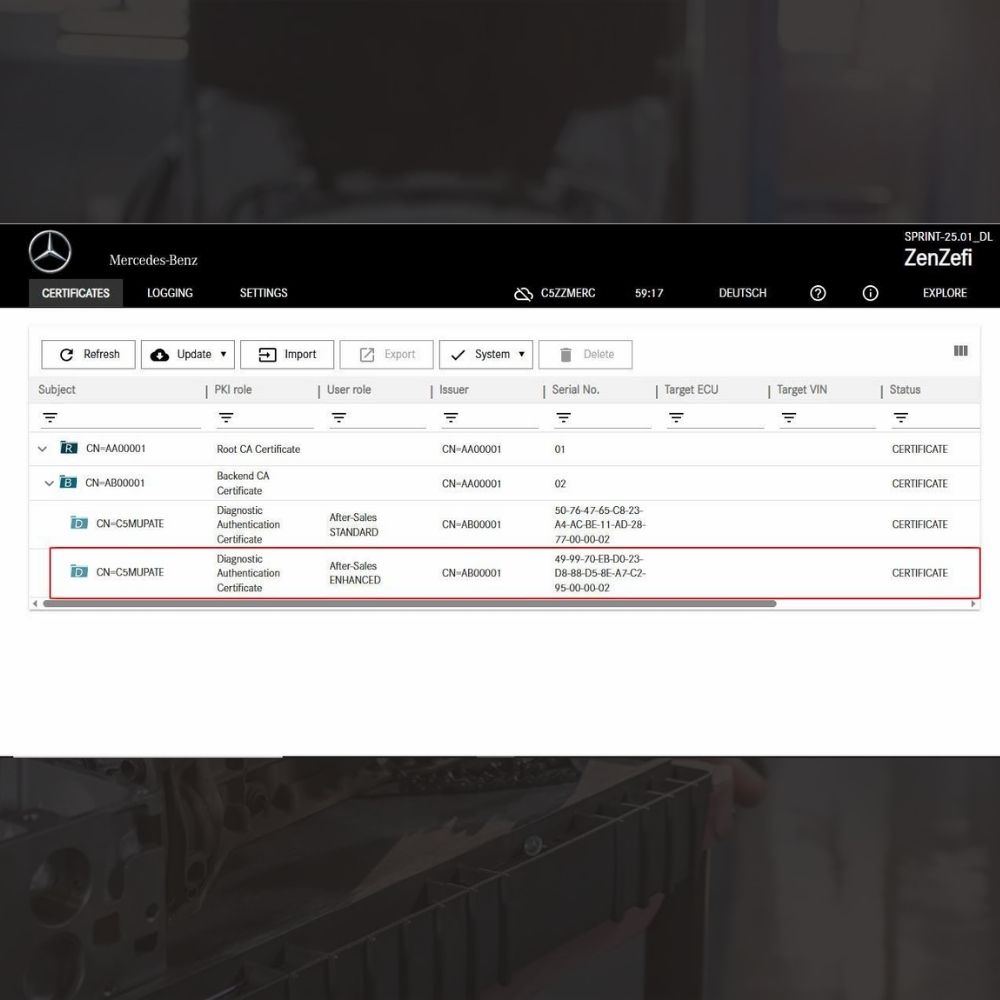
New Mercedes Car Coding Solution with ZenZefi certificate for DTS Monaco 9.02
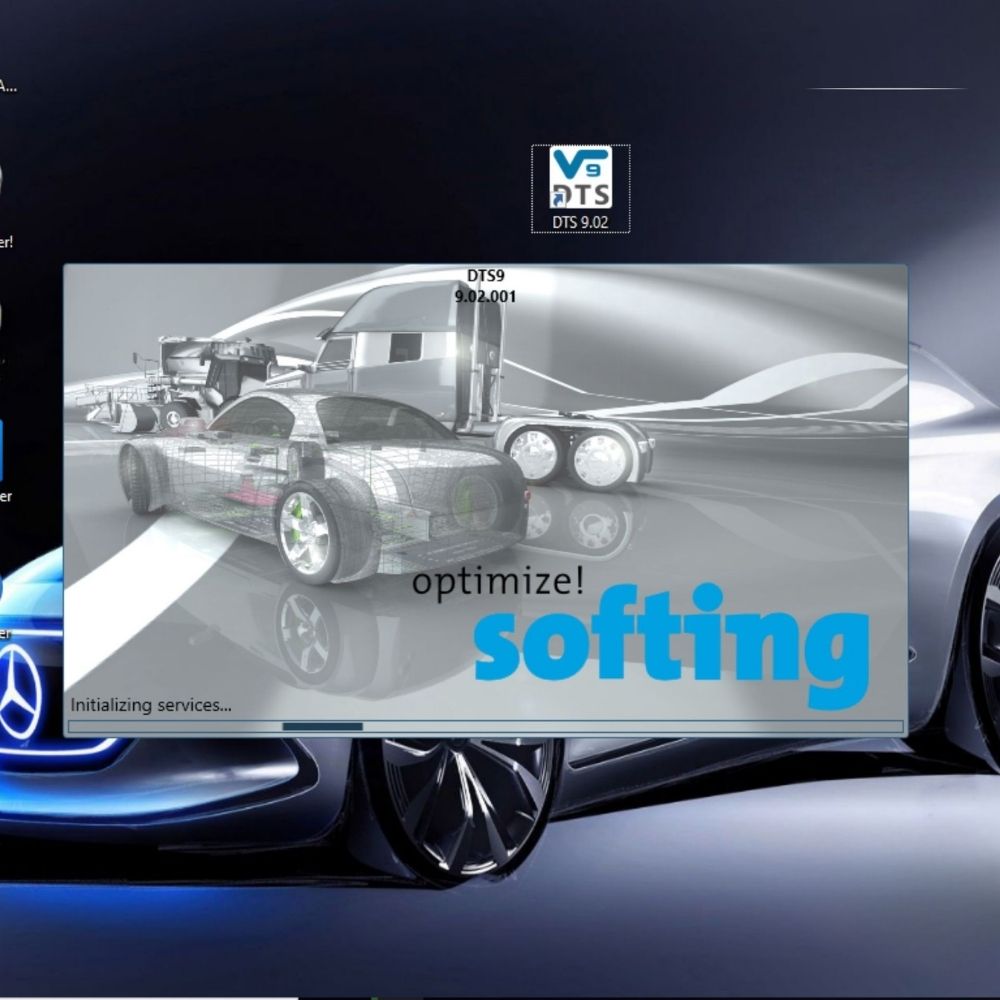
What is DTS Monaco? Key Functions of DTS Monaco Software
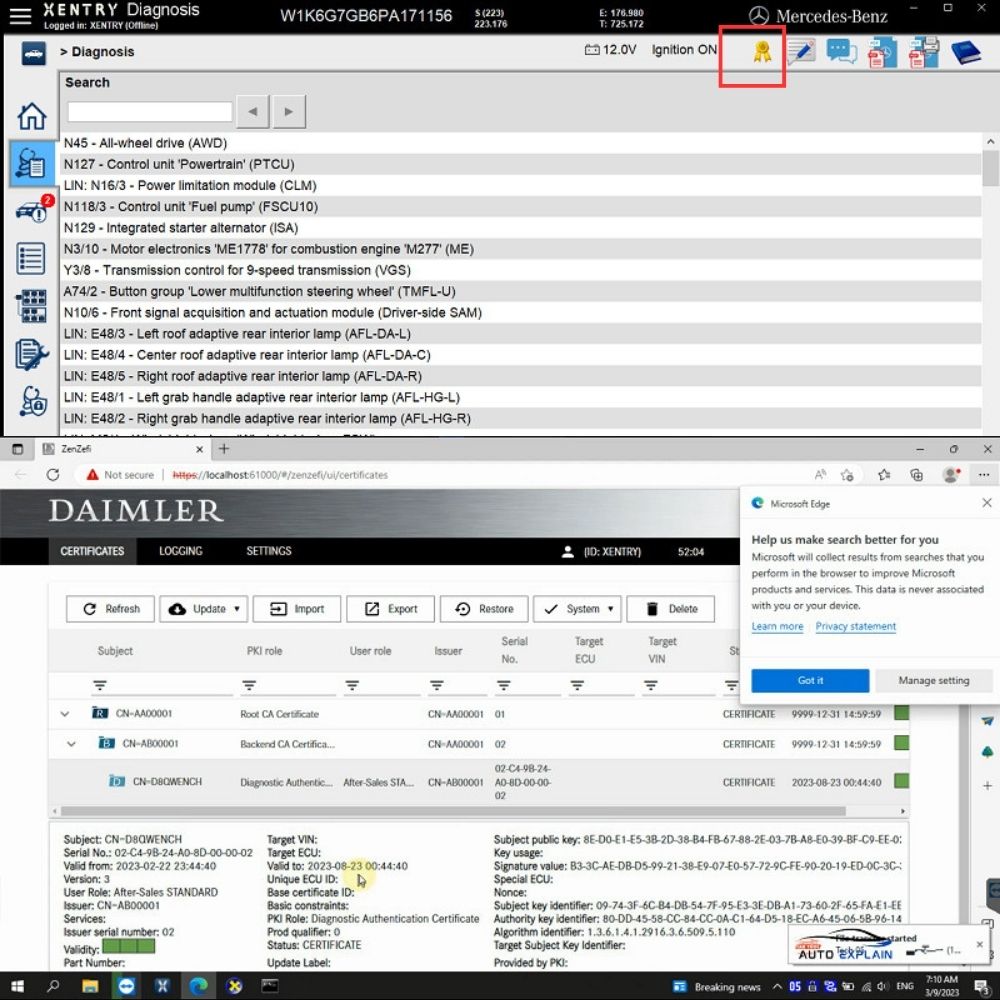
What is the Xentry Certificate Zenzefi? Why You Need It, and When It Is Required?



New Mercedes Car Coding Solution with ZenZefi certificate for DTS Monaco 9.02



